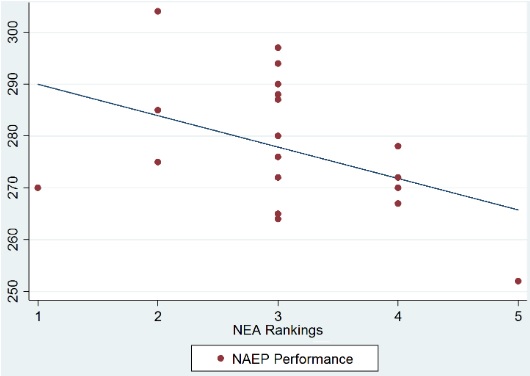When it comes to education policy and teachers unions, it is often the case that up is down and down is up. Teachers unions couch most arguments that benefit unionized public school teachers, like increased teacher pay, as being in the interest of children. The same type of arguments are made against charter schools.
Charter schools are independently operated public schools that have the freedom to design classrooms that meet their students’ needs. Teachers unions typically oppose charter schools because charter schools often have nonunion employees and represent competition for traditional district schools.
But in their public campaigns against charter schools, teachers unions go on the attack by claiming the schools are of poor quality, unaccountable, and discriminatory.
Just recently, the National Education Association, the nation’s largest teachers union, issued a “State Charter Statutes Report Card” to grade each state’s charter school laws. As you might expect, this report card issues positive or negative grades for states with charter school laws based on how heavy-handed charter school regulations are. After all, heavy regulation of charter schools must be in the best interest of children.
Except, it’s not. Up is down and down is up.
The best way to compare student outcomes is to use the National Assessment of Educational Progress results, commonly referred to as the Nation’s Report Card. The test is a nationally representative study conducted every two years in most states. It includes scores for charter school students that are comparable across the country. Using this data, along with data on the number of low-income kids in the school, it’s easy to compare the test scores with the NEA rankings.
The result is an inverse relationship between a negative NEA ranking and how well charter schools in a given state perform academically according to the Nation’s Report Card. States with better charter laws according to the NEA have worse charter school performance. Moving from “abysmal” to “very poor” on the NEA rankings is associated with a four-point decline in performance on the Nation’s Report Card for eighth grade math.
In other words, if the NEA got its way when it comes to charter school regulation, academic performance at charter schools would suffer. Perhaps, that is the point.
For example, Tennessee is ranked in the second-best category for its charter school law, but its performance is the lowest of states for which data existed. In contrast, Arizona, adjudged by the NEA to have among the worst laws, had the highest NAEP score of all.

For the NEA, the demand to increase regulation on charter schools is sold as accountability. It is purportedly, like all NEA policy positions, for the kids. But charter schools already face the greatest level of accountability possible: accountability to parents who trust the schools. If a charter school fails to meet the needs of its families, it will cease to operate. In fact, turnover in the charter school sector should be thought of as a feature rather than as a problem, as creative destruction works to improve the marketplace over time.
Fighting back against the NEA’s vision for charter schools is critical because these schools tend to serve students who are most often left behind in our traditional public school system. Charter schools have a higher percentage of students who are African American and Hispanic—two groups for whom the achievement gap is a national issue.
Recent polling shows that even as the national Democratic Party moves towards virulent opposition to these schools, support among minorities for charter schools remains very high. It is vital that policymakers reject the NEA’s goals for charter schools so that they may remain a path out of failing systems.
Will Flanders (@WillFlandersWI) is a contributor to the Washington Examiner’s Beltway Confidential blog. He is research director for the Wisconsin Institute for Law & Liberty.

